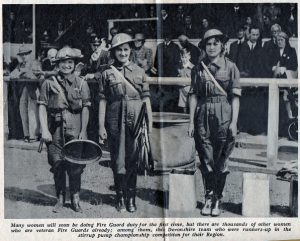SGPC Annual Meeting: Chairman Oswyn Murray's Report 2018
This is my last meeting: I became a councillor in Sept 2008, and was elected chairman in May 2010. Instead of simply reviewing the past year, I thought that I would take this opportunity of recording the successes and failures of the past decade.
We began with a most ambitious Sibfords Community Plan for both villages, involving a questionnaire to all villagers: it took over a year to complete and was masterminded by Richard Hartree and Sue Mattinson. The result was outstanding, and its conclusions are available on the website, where it offers a blueprint for the future. Although (because of expense and incredible bureaucracy) we did not seek to turn it into a full planning document, I don’t think this matters because, as far as I am aware, even legally binding Parish Plans have been systematically ignored by a government allegedly committed to localism. Nevertheless we have used this plan often, especially to assess specific planning applications, and we commend it to our successors.Another very ambitious survey was supported by the Parish Council, the review by Cherwell DC of the Conservation Area of the two Sibfords, and the listed building Review. This was carried out by Rose Todd and her conservation team at Cherwell, and has again been very useful in arguing for sustainable development in the Sibfords; this is on the Cherwell website, and is also a very good potted history of the villages.
Two other important developments will we hope continue to benefit the village for many centuries. The first is the taking in hand of Miriam Tebb’s donation of a small pocket of land in Burdrop. With the help of a grant from TOE2 we have cleared this plot and turned it into a bird sanctuary and a community orchard: half a dozen trees, chosen as eaters to be scrumped by children, are beginning to fruit – I tasted my first apple last autumn, and it was delicious. All that remains is to keep the hedges and undergrowth trimmed, and to provide a new bench opposite the view, to replace the old one that Miriam used to sit on. Secondly thanks to the Town Estate Charity virtually all the land along Acre Ditch is now in the hands of the community in perpetuity. They already owned the school buildings; they acquired the remaining part of Wheathills (the livery stables: the upper field was purchased by the Trust with the help of a public subscription in 1998). And thanks to the generosity of Margaret Hobson they have acquired the Millennium Field, which was so lovingly planted with trees and laid out as a series of walks by her husband Paul over the thirteen years that he lived in the village. It is amazing to think that this major asset will delight villagers for the next millennium. The Parish Council has committed itself to managing and maintaining the Field with the cost shared equally between the Charity and the Parish Council.
Broadband arrived in the village in 2016, before it was available in the Ferris. Trustees to the Town Estate Charity was clarified: We established a formal procedure for nominating the Parish Trustees, and our first vacancy was filled by the Rev. Liz Hawkes. Extra grass cutting has gradually accrued: firstly the churchyard and burial ground is our responsibility by an Elizabethan law, and we agreed with Sibford Ferris to share the cost, secondly Miriam Tebb’s Land and the Millennium Field need maintaining, and thirdly the verges within the 30 mile speed limits have been abandoned by OCC except for once a year, and we have agreed to take on three extra cuttings.
Much time has been devoted to the Bishop Blaize, also known by a succession of aliases. The Parish Council was reluctantly drawn into this dispute because of public pressure and the continuous series of planning applications by the owners over the last twelve years. In 2013 and 2014 there were two full public hearings by Planning Inspectors, both of which ruled against the applicants. There was huge public support on these occasions from the two villages. In 2014 the owners were convicted of continuing to use the property as a private house contrary to planning laws; they then opened it as an occasional public house. In 2016 they advertised it for sale as a pub, which enabled us finally to have it listed as an Asset of Community Value. This can be renewed every five years, and means that the property must remain a public house, rather than becoming a private dwelling. In summer 2016 the two Parish Councils organised a public meeting to ascertain whether the community was in support of this action: roughly 100 people turned up and voted overwhelmingly to support the ACV status. Currently the owners have launched another application to the Planning Inspectorate to have the refusal of Cherwell DC overturned. SGPC supported the original refusal with a detailed series of comments, and we have reinforced these for the current Appeal. The new Councillors have indicated that they will continue to pursue the matter of enforcement once the Appeal is concluded. Finally the chairman listed items still outstanding.

